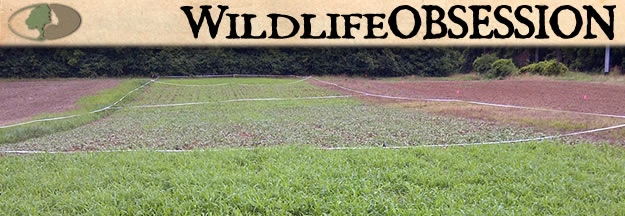
There are many subjects to focus on when it comes to land management; spring/summer plantings, keeping native vegetation healthy, selecting the correct food crops, the building of access roads, and the list goes on. The main goal is to achieve the best results and provide optimal care for the wildlife consistently - 365 days a year.
Land varies in all sections of a property, as land managers know. Having to deal with creeks, timberland, cropland, perhaps even a wetland, or finding solutions to feeding the soil the nutrients it needs, are all points the land manager takes into account. And to do all this, to maintain every acre, the land manager must make sure to have access to all niches, nooks and crannies of the property at all times, in all weather conditions.
Access is a must, which means the creation of access roads and crossings come into play; they not only provide admission to all areas but they guarantee the land manager a safe and secure way to reach the outer limits without worrying about the many road blocks Mother Nature throws in their path.
Natural land changes occur; soil content alters simply when Old Man Winter moves in. Plantings will, of course, not be the same in Maine as they are in the dry, arid terrain of New Mexico. Whereas one land manager in the east may own rich, natural vegetation - the desert areas of this country will deal with caliche and/or adobe, lacking the nutrients and water sources that are essential for sustaining high-quality plant growth. And once achieved, the land manager must be able to provide a way for the wildlife to come and enjoy.
 There are crucial factors when it comes to attaining and maintaining optimal health for your property, and when hiring a contractor, all land managers must do the research and make sure the background, knowledge, expertise, and equipment necessary come along with the contractor they hire. Access roads must be established correctly, with the key factor being ultimate safety.
There are crucial factors when it comes to attaining and maintaining optimal health for your property, and when hiring a contractor, all land managers must do the research and make sure the background, knowledge, expertise, and equipment necessary come along with the contractor they hire. Access roads must be established correctly, with the key factor being ultimate safety.
Maintenance, recreation, conservation, planting - with solid access roads, all this can be done and increase the value of your property at the same time. So when designing a plan, look for a way to create that access system to traverse natural bodies of water, as well as keeping the drainage elements up to par for planting.
Access road failure comes from the improper placement and construction of road fills; incorrect or insufficient culvert sizes; steep road grades that make it impossible to traverse or transport necessary equipment needed to aid another spot on the property, and more. These roads are features placed in the long-term category and must be designed correctly the first time around so the value of the property you’re attempting to achieve does not turn into a money-pit by having to reconstruct.
Another great need is for wildlife corridors. When it comes to planting food crops that the buck, doe and fawn, waterfowl, etc. need in order to stay on your property and achieve the ultimate in health, size and even antler growth, there can be no barriers between the creatures and the nutrients they seek. If wildlife cannot travel to their food, or have the ability to roam the thriving food crops put in for their stability, not to mention search for water or bedding, the property can become useless.
Soil surveys, farmland protection, grazing land conservation assistance - there is in-depth information on establishing travel access to all areas of the property 365 days a year. Not to mention the fact that a company like Mossy Oak can not only provide tips, but can also provide the right seed for perfect food crops based on your region/location and species being fed. They also offer knowledge when it comes to handling everything from soil health to property development.
The Mossy Oak GameKeepers share the belief that being outdoors is about loving the land, its wildlife, and giving back more than you take. For more articles and information about managing land for wildlife, please visit farmingforwildlife.com.






























